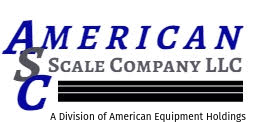At American Scale Company, our primary goal is to help our customers make accurate and reliable weight measurements. To do this effectively, we assess each customer’s weighing application and operating environment before recommending the best weighing system for the job. Our services include identifying, installing, and maintaining the scale system, often for its lifetime.
The primary steps in selecting the best weighing system include:
1. Choosing the load cell(s)
2. Picking the indicator
3. Attaching related peripherals
4. Integrating with the right software
In this article, we’ll focus on choosing the right electronic load cell for the job. First off, we need to better understand what an electronic load cell is.
According to Wikipedia, a load cell is:
a type of transducer, specifically a force transducer. It converts a force such as tension, compression, pressure, or torque into an electrical signal that can be measured and standardized. As the force applied to the load cell increases, the electrical signal changes proportionally.
Physically, nearly all load cells consist of a metal housing or body, several strain gauges, and either a four or six-wire cable. These physical characteristics come in several varieties as we can see below, each with certain advantages and disadvantages.
Load Cell Housing or Body:
Canister or Column Load Cell (single or multiple column)
Shear beam (Single or double ended)
S Beam or S Type
Single Point
Button or Pancake
Shear Web
Load Cell Construction Material:
Aluminum
Alloy Steel
Stainless Steel
Load cells are categorized into three major groups:
Environmentally Protected (EP)
Welded Seal (WS)
Hermetically Sealed (HS)
It is important to understand the differences in these three groups to prevent using the wrong load cell for a particular application. Using the wrong type can be an expensive lesson and will likely cause load cell failure.
Environmentally protected load cells are for use in normal indoor or protected outdoor environments. These load cells use potting, rubber booting or redundant sealing around the strain gauge cavities and connection ports to protect from moisture. Welded seal load cells are environmentally protected with welded gauge covers for additional moisture protection.
These two types of load cell are not suited for high moisture, steam, or direct wash-down applications - hermetically sealed load cells are necessary for these applications.
Hermetically sealed load cells use advanced welding techniques and thin metal seals to handle the extremes of harsh chemical and wash-down applications. These seals are laser-welded, covering the strain gauge and compensation cavities which are then potted or filled with an inert gas for redundant protection. Manufacturers also perform leak tests reveal any microscopic flaws in the sealing weld. For true hermetic protection, the strain gauge cavity and cable entry area are designed to increase ingress protection (IP).
While hermetically sealed load cells cost more than environmentally protected ones due to additional manufacturing steps, they are the most suitable for harsh conditions and may be the best long-term choice for harsh chemical, wash-down and unprotected outdoor applications.
This article only briefly covers some of the major considerations when choosing an electronic load cell, and there are many other factors one should consider when selecting their weighing system.
To ensure you pick the right scale for the job, reach out and let us help you. At American Scale, we worry about your scales so you don’t have to!
CONCLUSION
At American Scale we strive to bring you informed and useful content on all things scale related. Be sure to check out our legal for trade truck scale system articles about truck scale foundation or how much do truck scales cost. We even have a guide to warranties. We also have articles on scale accessories, common problems to prolong your scales lifespan, weighing applications as well as what scale indicator works best with your junction box. To learn more about bench scales, it would be good to check out our other articles such as “Bench Scale Basics'' and “How Much Does A Bench Scale Cost?”. These articles will help with the basics of bench scale ownership.

